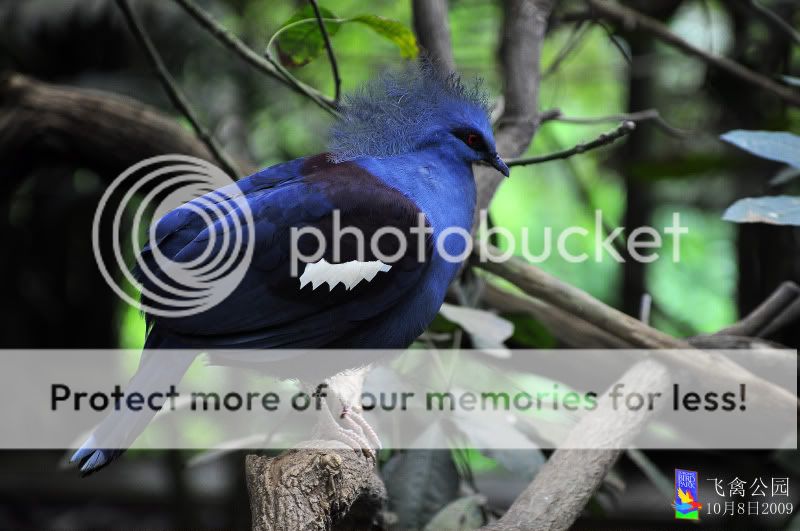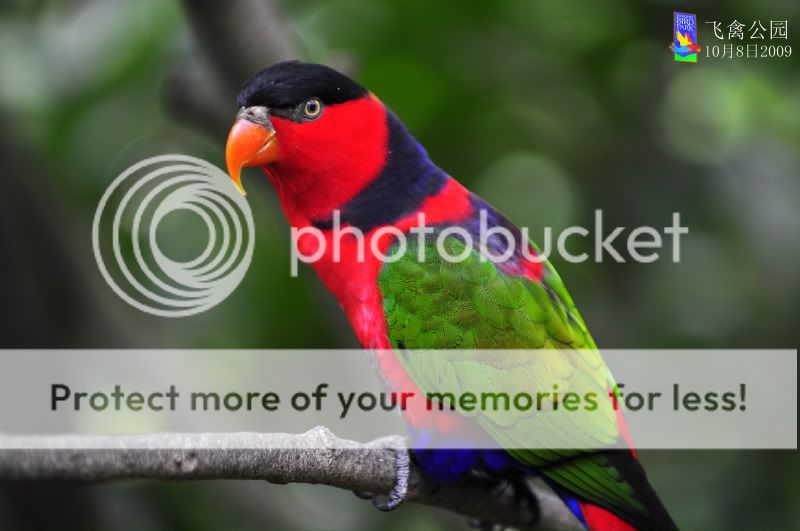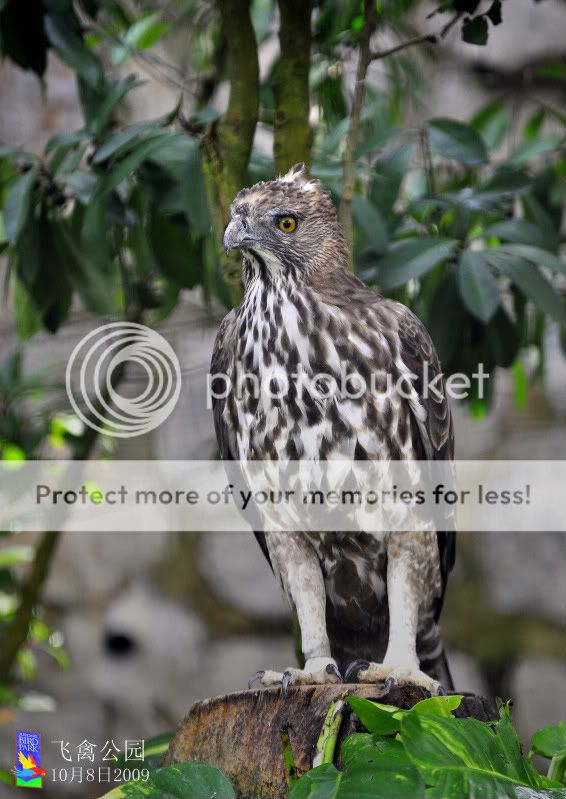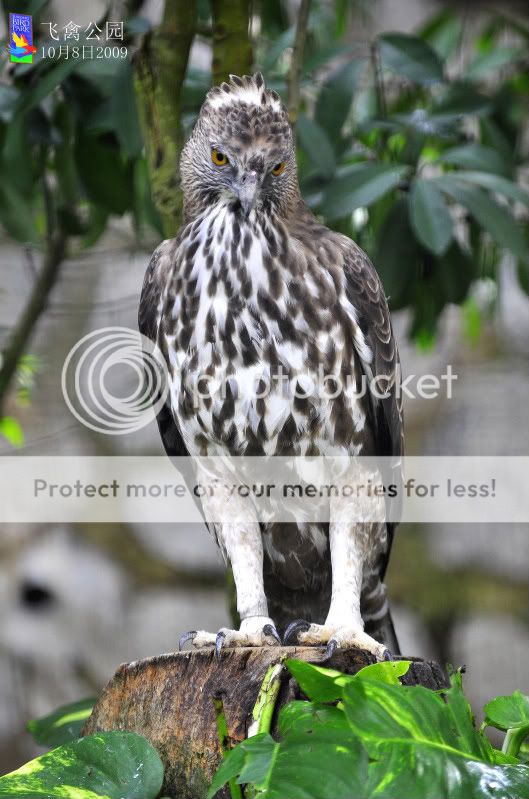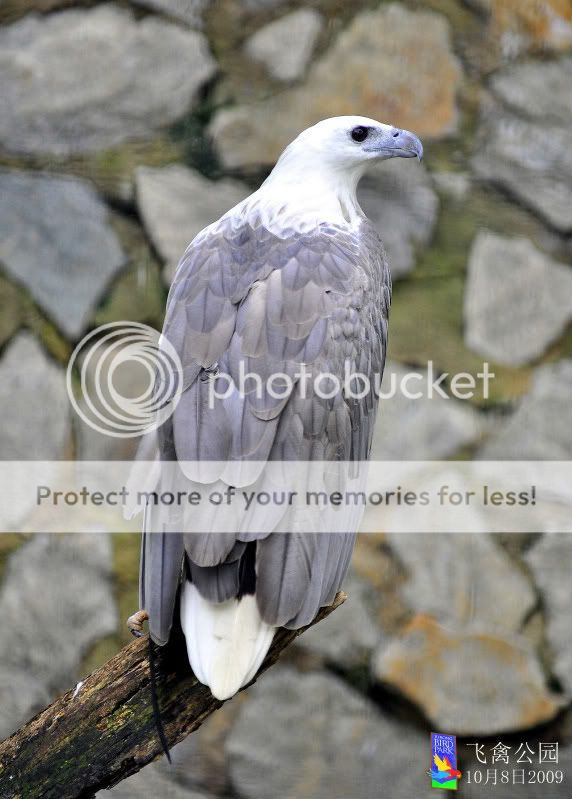Hi all!
Finally exercised my trip to the birdpark from my 2-in-1 ticket bought @ the zoo. I was keeping my fingers crossed all the way as it was raining the whole week and looked a dreary Saturday mid-morning as i was making my way there, luckily there was no serious downpour and i still managed to get some nice clean shots though i would have loved more sun hahaha.
It must have been 20 years at least since my last visit hahaha and i must say it has changed a lot! But all in all i think i still prefer the zoo hahaha though our birdpark is definitely one i think we can be proud of =)
Some back ground on the birdpark :
Jurong Bird Park 裕廊飞禽公园
The idea of a permanent bird exhibit was first conceived by Dr Goh Keng Swee, the then Minister for Finance, in 1968. During a World Bank Meeting in Rio de Janeiro, Dr Goh visited its zoological garden and was impressed with its free-flight aviary. He sought to see that Jurong would be more than an industrial zone that Singaporeans would have a place where they could escape from urban life, where people could relax with nature. On 3 January 1971, Jurong Bird Park, built at a cost of S$3.5 million, was opened to the public.
In 2006, the Jurong Bird Park completed its S$10-million makeover. With the upgrading, the park now boasts a new entrance plaza, an African wetlands exhibit, a park-owned and managed Bongo Burgers restaurant, a Ben & Jerry's ice cream parlour, a gift shop and a bird hospital.
We have also successfully breed a lot of birds where other birdparks did not managed to =), anyway on to the pictures, C&C much appreciated.
My first stop was the World of Darkness, i was really pitch dark which made photography a bitch so i missed a few of the owls, but i think its cool so dun miss this if u are there.
#1 Buffy Fish Owl

#1.1 Buffy Fish Owl

#1.2 Buffy Fish Owl

Buffy Fish Owl
These beautiful, medium-sized owls are named for the yellowy beige (also known as buff) feathers on their heads and chests that are interspersed with dark, vertical streaks. Their large eyes are yellow and they have long ear tufts. They have rich brown feathers on their back. There is a white V on their forehead that begins from the tip of the bill and extends over each eye.
Buffy fish owls can be found in Malaysia, Thailand and the Indonesian Islands. They live in forested areas with a nearby water source so that they have access to fish. There is also a family in Singapore in Sentosa and Lower Pierce Reservoir according to web reports.
#2 Eurasian Eagle Owl

Eurasian Eagle Owl
The Eagle Owl is a large and powerful bird, smaller than the Golden Eagle but larger than the Snowy Owl. It is sometimes titled the world's largest owl, but so is the Blakiston's Fish Owl, which is slightly bigger on average.The Eagle Owl has a wingspan of up to 138-200 cm (55-79 in) and measures 58-75 cm (23-30 in) long. Females weigh 1.75-4.2 kg (3.9-9.4 lbs) and males weigh 1.5-3.2 kg (3.3-7 lbs). In comparison, the common Barn Owl weighs about 500 grams (1.1 lbs). It mainly feeds on small mammals, but can kill prey up to the size of foxes and young deer (up to 10 kg/22 lb), if taken by surprise. Larger prey (over 3 kg/7 lb) is consumed on the ground which leaves the bird vulnerable (for example to foxes).
The call of the Eagle Owl is a deep resonant ooh-hu with emphasis on the first syllable for the male, and a more high-pitched uh-Hu for the female (in German and Hungarian, the name of this bird is "Uhu"). Each member of an Eagle Owl population can be identified by means of its vocalizations.
The size, ear tufts and orange eyes make this a distinctive species. It has a strong direct flight. The ear tufts of males are more upright than those of females.
The horned owls are a part of the larger grouping of owls known as the typical owls, Strigidae, which contains most species of owl. The other grouping is the barn owls, Tytonidae.
cheers,
kilkenny
Finally exercised my trip to the birdpark from my 2-in-1 ticket bought @ the zoo. I was keeping my fingers crossed all the way as it was raining the whole week and looked a dreary Saturday mid-morning as i was making my way there, luckily there was no serious downpour and i still managed to get some nice clean shots though i would have loved more sun hahaha.
It must have been 20 years at least since my last visit hahaha and i must say it has changed a lot! But all in all i think i still prefer the zoo hahaha though our birdpark is definitely one i think we can be proud of =)
Some back ground on the birdpark :
Jurong Bird Park 裕廊飞禽公园
The idea of a permanent bird exhibit was first conceived by Dr Goh Keng Swee, the then Minister for Finance, in 1968. During a World Bank Meeting in Rio de Janeiro, Dr Goh visited its zoological garden and was impressed with its free-flight aviary. He sought to see that Jurong would be more than an industrial zone that Singaporeans would have a place where they could escape from urban life, where people could relax with nature. On 3 January 1971, Jurong Bird Park, built at a cost of S$3.5 million, was opened to the public.
In 2006, the Jurong Bird Park completed its S$10-million makeover. With the upgrading, the park now boasts a new entrance plaza, an African wetlands exhibit, a park-owned and managed Bongo Burgers restaurant, a Ben & Jerry's ice cream parlour, a gift shop and a bird hospital.
We have also successfully breed a lot of birds where other birdparks did not managed to =), anyway on to the pictures, C&C much appreciated.
My first stop was the World of Darkness, i was really pitch dark which made photography a bitch so i missed a few of the owls, but i think its cool so dun miss this if u are there.
#1 Buffy Fish Owl

#1.1 Buffy Fish Owl

#1.2 Buffy Fish Owl

Buffy Fish Owl
These beautiful, medium-sized owls are named for the yellowy beige (also known as buff) feathers on their heads and chests that are interspersed with dark, vertical streaks. Their large eyes are yellow and they have long ear tufts. They have rich brown feathers on their back. There is a white V on their forehead that begins from the tip of the bill and extends over each eye.
Buffy fish owls can be found in Malaysia, Thailand and the Indonesian Islands. They live in forested areas with a nearby water source so that they have access to fish. There is also a family in Singapore in Sentosa and Lower Pierce Reservoir according to web reports.
#2 Eurasian Eagle Owl

Eurasian Eagle Owl
The Eagle Owl is a large and powerful bird, smaller than the Golden Eagle but larger than the Snowy Owl. It is sometimes titled the world's largest owl, but so is the Blakiston's Fish Owl, which is slightly bigger on average.The Eagle Owl has a wingspan of up to 138-200 cm (55-79 in) and measures 58-75 cm (23-30 in) long. Females weigh 1.75-4.2 kg (3.9-9.4 lbs) and males weigh 1.5-3.2 kg (3.3-7 lbs). In comparison, the common Barn Owl weighs about 500 grams (1.1 lbs). It mainly feeds on small mammals, but can kill prey up to the size of foxes and young deer (up to 10 kg/22 lb), if taken by surprise. Larger prey (over 3 kg/7 lb) is consumed on the ground which leaves the bird vulnerable (for example to foxes).
The call of the Eagle Owl is a deep resonant ooh-hu with emphasis on the first syllable for the male, and a more high-pitched uh-Hu for the female (in German and Hungarian, the name of this bird is "Uhu"). Each member of an Eagle Owl population can be identified by means of its vocalizations.
The size, ear tufts and orange eyes make this a distinctive species. It has a strong direct flight. The ear tufts of males are more upright than those of females.
The horned owls are a part of the larger grouping of owls known as the typical owls, Strigidae, which contains most species of owl. The other grouping is the barn owls, Tytonidae.
cheers,
kilkenny





